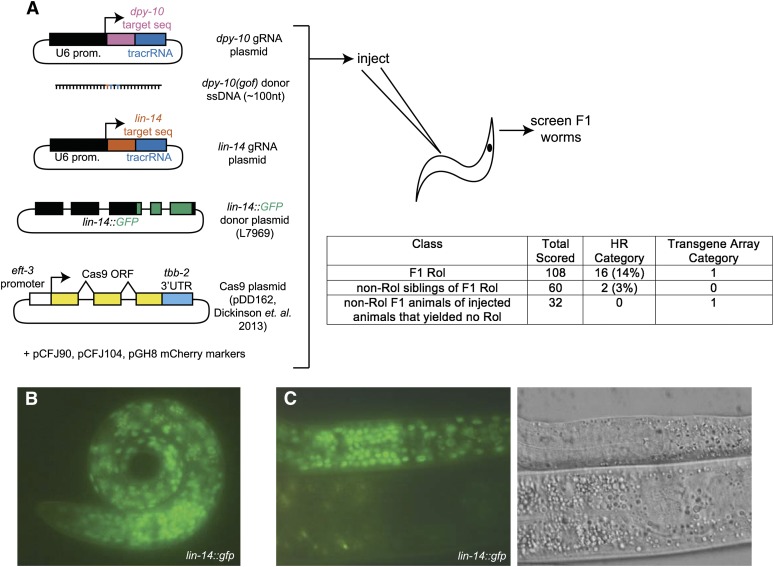Figure 5.
Oligonucleotide-templated HR as a marker for integration of GFP at a second locus. (A) L7969 is a derivative of VT333G (Hong et al. 2000) and encodes a C-terminal lin-14::GFP fusion (exons 4 through the C terminus of lin-14) and was included in the injection mix at 20 ng/μl. Guide RNA plasmids were 25 ng/μl, pDD162 was 50 ng/μl, and dpy-10 donor DNA was 500 nM. Transgenic-marking reporter fusions were included in the injection mix: Pmyo-2::mCherry::unc-54 (pCFJ90, 2.5 ng/μl), Pmyo-3::mCherry::unc-54 (pCFJ104, 5 ng/μl), and Prab-3::mCherry::unc-54 (pGH8, 10 ng/μl). Forty-four animals were injected and 23 yielded Rol progeny. A large number of Rol and non-Rol progeny were observed, only a fraction of which were scored here. The HR category includes F1 animals screened by a combination of single-worm PCR and examination of their young progeny for characteristic lin-14::GFP expression patterns. The transgene array category includes animals yielding heritable GFP and mCherry coexpression. Of the 16 lin-14::GFP integration events among F1 Rol, 3 were from F1 mCherry-positive parents. (B) LIN-14::GFP expression pattern in a newly hatched L1 larva, similar to that reported in Hong et al. (2000). (C) Close-up of LIN-14::GFP expression pattern showing punctate nuclear GFP signal, consistent with that in Hong et al. (2000). Also note lack of expression in L4 larvae (bottom half). The faint yellowish signal in the L4 larvae is autofluorescence from the gut.

